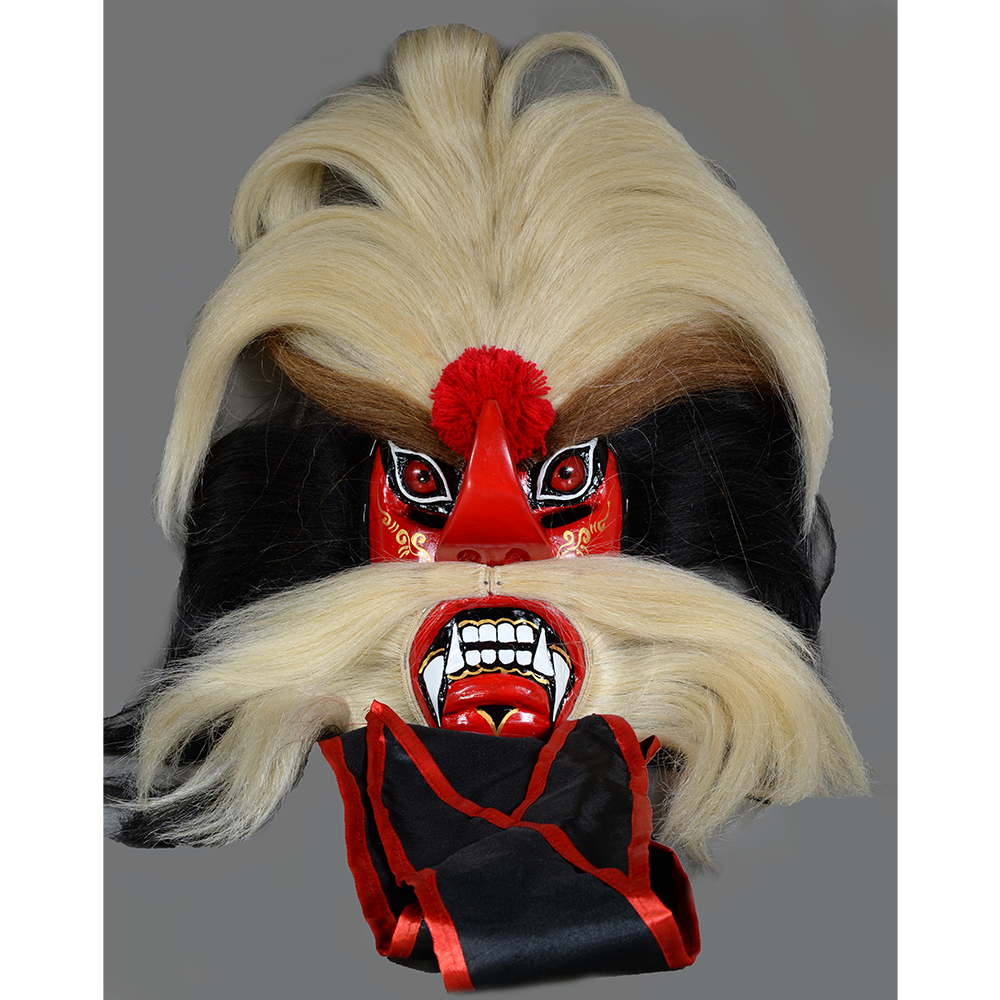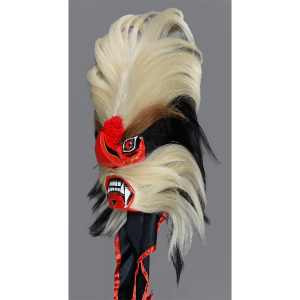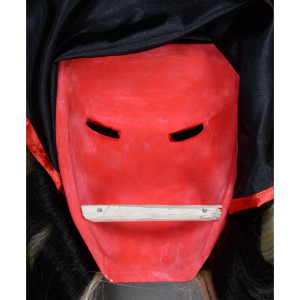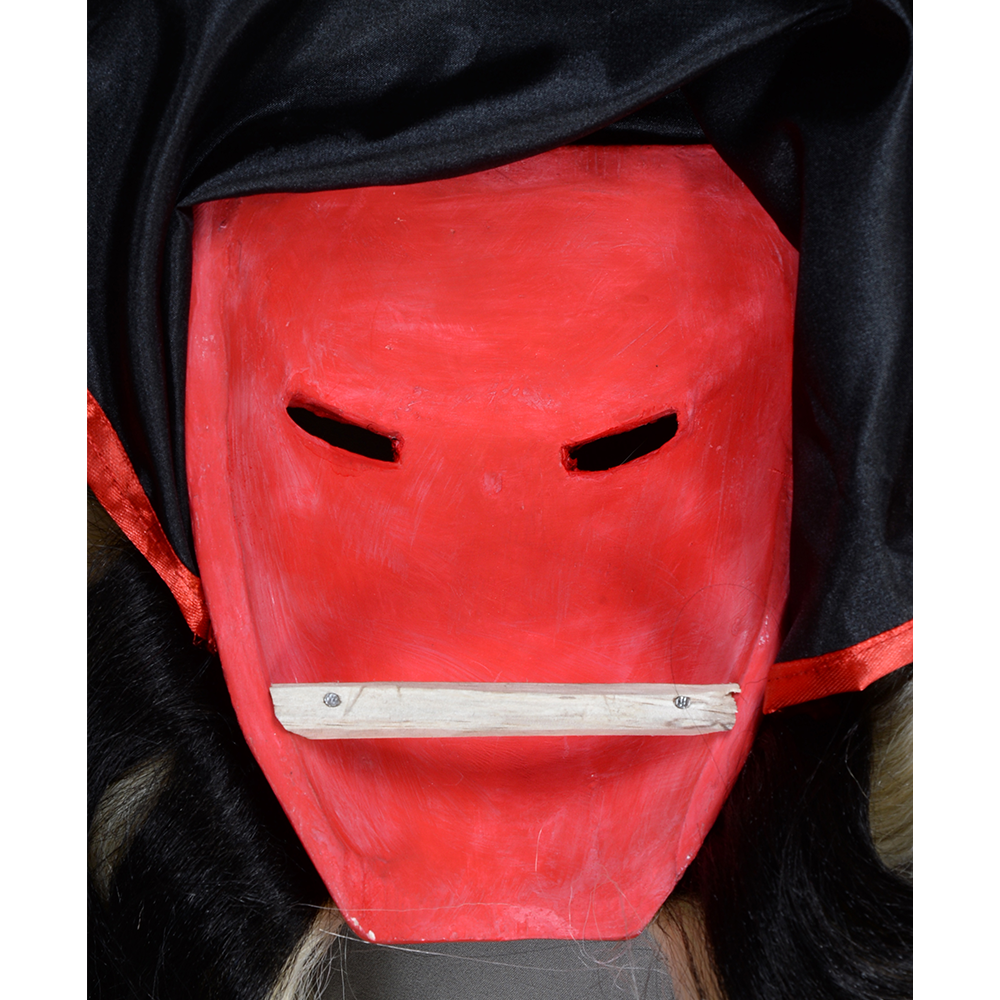TITLE: Bujang Ganong Reog Mask
TYPE: face mask
GENERAL REGION: Asia
COUNTRY: Indonesia
SUBREGION: Java
ETHNICITY: Javanese
DESCRIPTION: Bujang Ganong
CATALOG ID: ASID041
MAKER: Imam Amirul Musthafa (Ponorogo, 1961- )
CEREMONY: Reog Dance-Drama
FUNCTION: entertainment; protection/purification
AGE: 2024
MAIN MATERIAL: Indian coral tree wood
OTHER MATERIALS: resin eyes; synthetic hair; paint; dyed cotton decorations; cotton thread; polyester cloth; hardware
The Reog (also spelled Réyog) dance-drama is a Javanese ritual involving multiple masked and costumed dancers, that serves multiple purposes in Javanese society. It originated in Ponorogo, East Java, and tells the story of the King of Ponorogo, Klono Sewandono, on his journey to Kediri to marry Princess Songgo Langit. During this journey, he is attacked by a vicious beast, the Singo Barong, a lion-like creature with a peacock on its head. The Barong is accompanied by a cavalry composed of girls wearing costumes representing horses made of bamboo, called the jathil. The Reog proceeds in three sets of dances. The first involves the bujang ganong, male dancers in (usually red) masks that represent masculine traits, who perform acrobatic dances. The second is called the Jaran Kepang and is performed by the jathil. The third dance is perfomed by all the dancers together. The warok are the main male dancers and wear the Singo Barong mask (also called a Dedak Merak), sometimes with a jathil riding atop the mask. Each dance is accompanied by an orchestra composed of gamelans, reed flutes, and gongs.
The Reog is also widely interpreted as a satire about Majapahit rule over eastern Java, with the Barong representing the Majapahit king (the lion) and queen (the peacock, which sits atop the lion to control it). The jathil were formerly played by boys in drag (gemblak), but were changed to girls to accommodate Muslim religious opposition to transvestitism and pederasty. The femininity of the jathil is thought to represent the lost strength of the Majapahit army.
Reog is a spiritual dance-drama requiring intense concentration, dexterity, and physical strength. The masks are kept on without straps, but instead are gripped in the teeth of the dancers using a bite bar. This can be especially arduous for the Barong dancers, as the Singo Barong mask may weigh as much as 50 kg. Traditionally, the bujang ganong and reog perform their dances in a trance. Tooth damage from the performance has been medically documented as common. It is usually performed on Muslim holidays, as well as at important community events such as weddings and the anniversary of the Ponorogo Regency.
For more on the Reog Ponorogo, see Margaret J. Kartomi, “Performance, Music and Meaning of Réyog Ponorogo,” 22 Indonesia 84 (1976).













